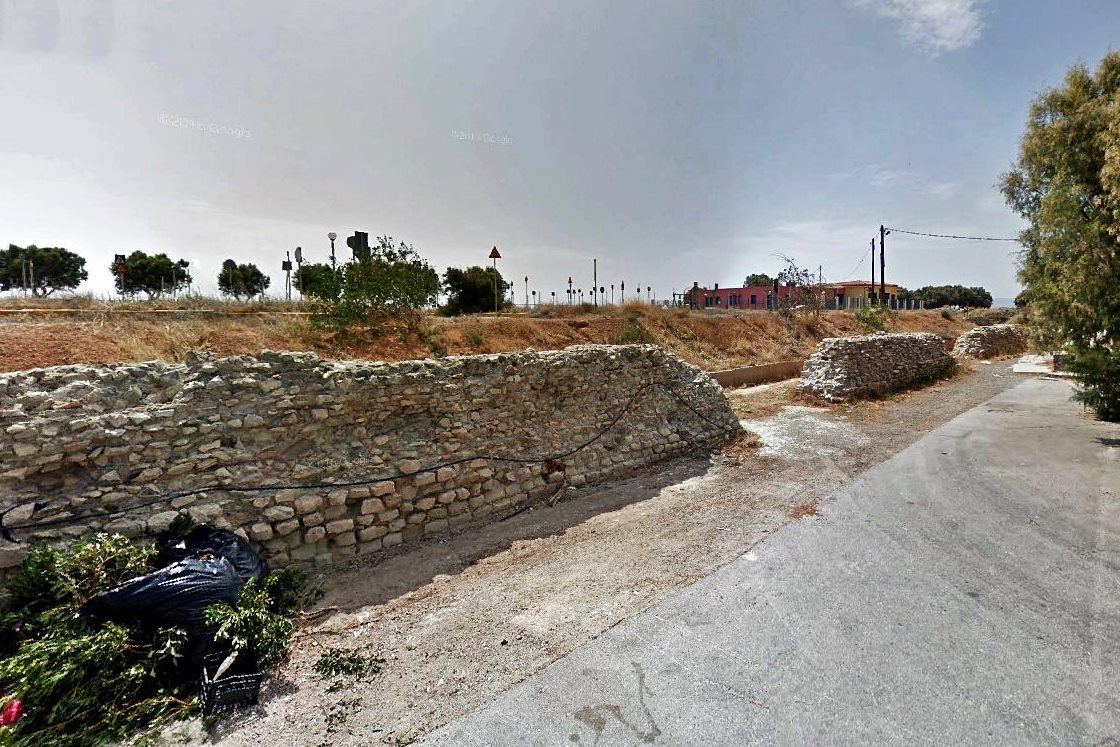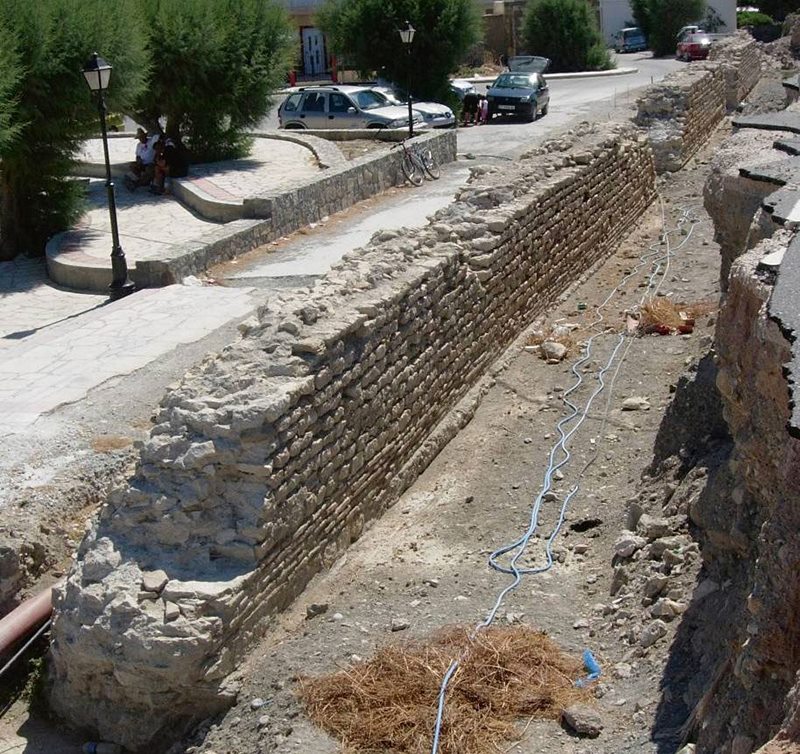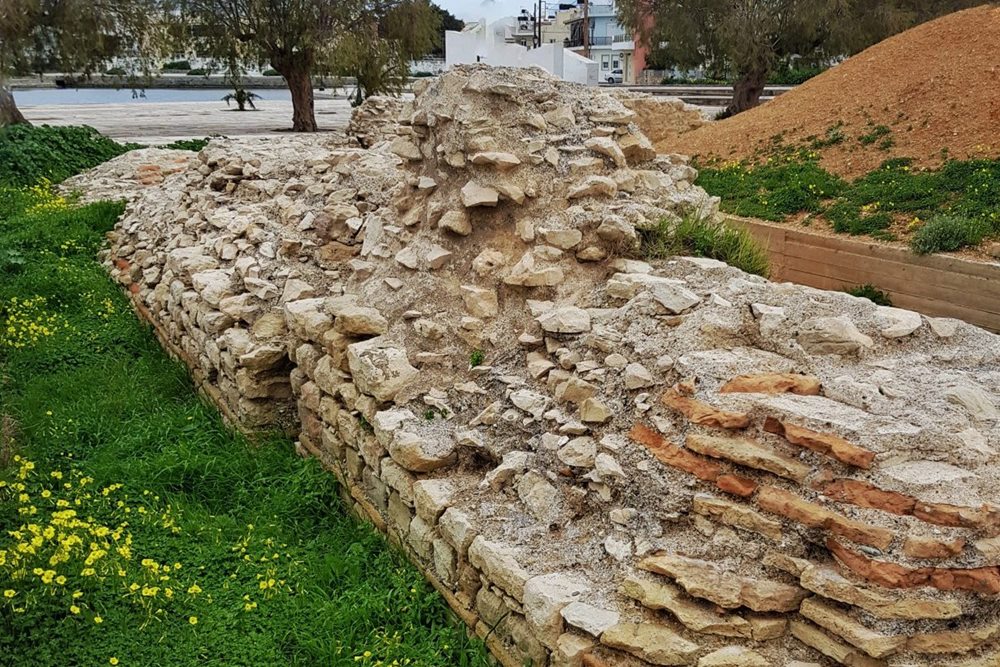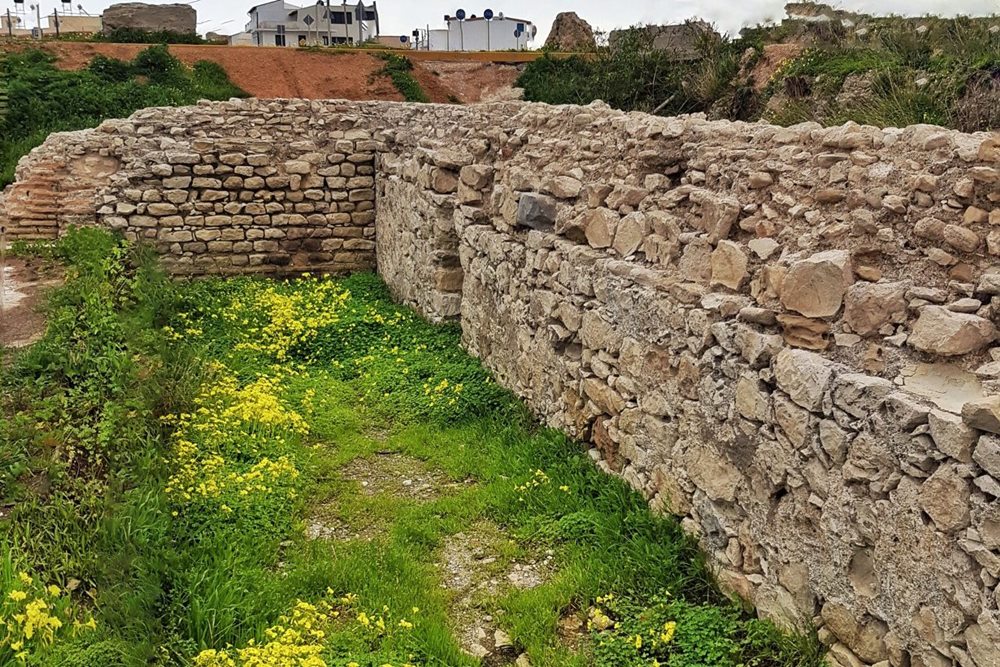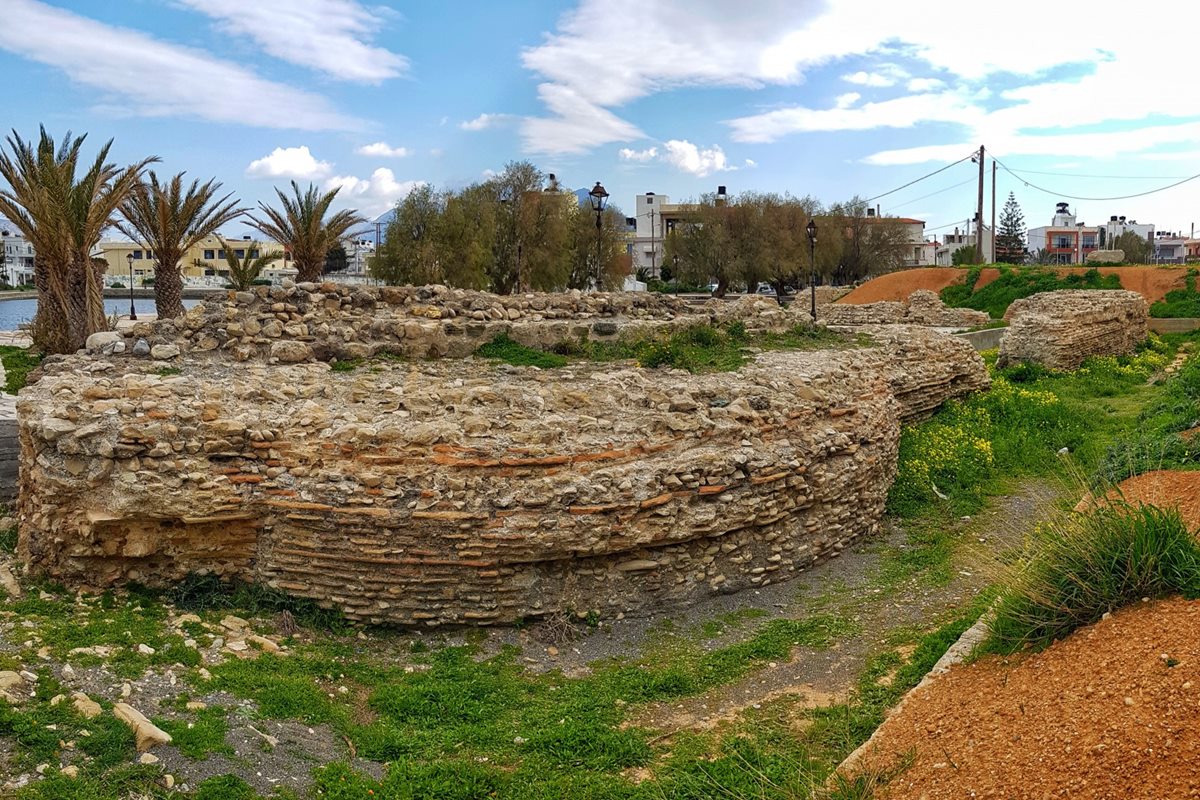Ierapetra, Ier;apetra, Lasithi,Crete
Byzantine walls of Ierapetra
| Location: |
| At the SW edge of Ierapetra, near the artificial lake “Navmachia” |
| Region > Prefecture: | 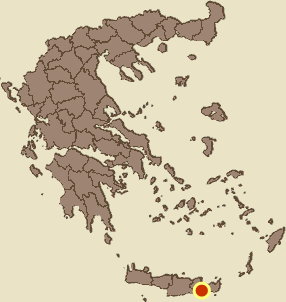 |
| Crete Lasithi | |
| Municipality > Town: | |
| City of Ier;apetra • Ierapetra | |
| Altitude: | |
| Zero Altitude |
| Time of Construction | Origin | |
| 6th cent A.D. | Early ΒΥΖΑΝΤΙΝΕ |
|
| Castle Type | Condition | |
| Castle Ruins |
In Ruins
|
Remains from the Byzantine fortification of Ierapetra. The wall extends to a length of about 150 meters (not continuously) on the periphery of the traffic education park of Ierapetra, at the SW end of the city near the artificial lake Navmachia (meaning (“Naval Battle”). Obviously these are remnants of a sea wall. Some parts of the fortification are also preserved inside the park.
History
Ierapetra in antiquity had the name Ierapytna. Its location must have been 1 km further from its current position. It developed especially during the Roman period, when it developed into an important port.
The city is mentioned with a similar name, as Ierapydna also in the Synekdimos of Hierocles (list of cities of the empire of about 532 AD). This must have been the Byzantine name of the city as evidenced by other sources as well (which however are very limited).
Unfortunately we do not have more information about the Byzantine past of Ierapydna. The name “Ierapetra” or “Gerapetra ”appeared much later, towards the end of the Venetian occupation.
The Byzantine walls definitely belong to the first Byzantine period of Crete, ie they were built long before the Arab conquest of the 9th century. The walls were apparently part of the fortification that protected the port and the sea front of the early Byzantine city. The technology of construction and the type of masonry are very similar to other castles of the early Byzantine period such as Nikopolis or parts of the walls of Thessaloniki. Therefore, it is very likely that the walls were built in the 4th or 5th century A.D. and were certainly strengthened (or rebuilt) around the middle of the 6th century during Justinian, when a large program of repairs and fortifications was implemented throughout the empire.
In other words, this fortification in Ierapetra is perhaps the only case in Crete that can be described as a “Justinian wall”.
The Byzantine walls must have been destroyed or rendered useless either when Crete was occupied by the Saracens or shortly before, in the great earthquake of 796 AD. Since then, the walls have not been repaired and do not seem to have been reused even when Crete was recaptured by the Byzantines. Nor, later, did the Venetians (13th-17th century) take any action to fortify the city beyond the construction of the Kale of Ierapetra. A letter to the Senate of Venice by the Provveditore Benedetto in 1602 verifies that Ierapetra was not protected by city walls.
On the contrary, the Ottomans who occupied Ierapetra in 1647 built a complete fortification surrounded by a sea moat (part of which was the “Naval Battle” lake). There is nothing left of the Ottoman walls of the city because they were demolished in a a celebration mood after the liberation by the Turks in 1899 ....
The Byzantine walls of Ierapetra became the subject of archaeological research, excavation and restoration of the area relatively recently, in the period 2006-2008.
| First entry in Kastrologos: | July 2021 |
Sources
- Νίκος Μ. Γιγουρτάκης, article in the website archaiologia.gr - Οχυρώσεις της Κρήτης (Μέρος 2ο), 8 June 2015
- Website blog your heritage-ΕΠΑΛ Ιεράπετρας - Τα Βυζαντινά Τείχη της πόλης
- Info and location by Pavlos Liontakis
|
|
| Access |
|---|
| Entrance: |
| Free access |
| Other castles around |
|---|
| Tower of Ambela |
| Koules of Episkopi |
| Kales of Ierapetra |
| Kornaros Tower |
| Mesokastela |
| Tower of Vaïnia |
| Koules of Vasiliki |



